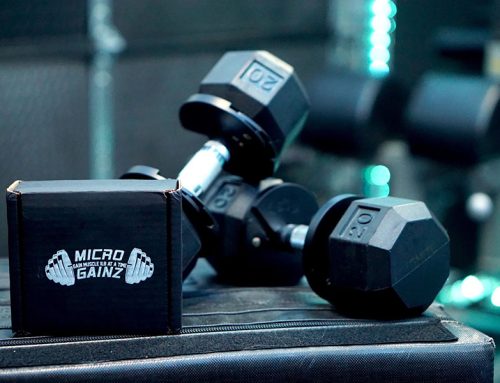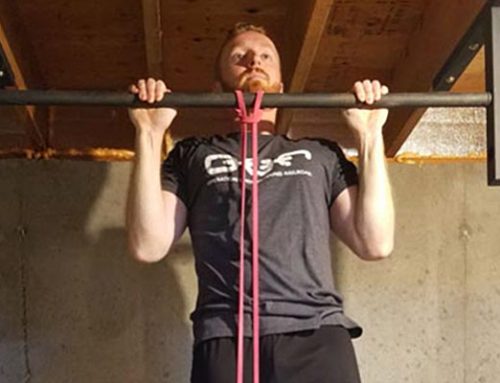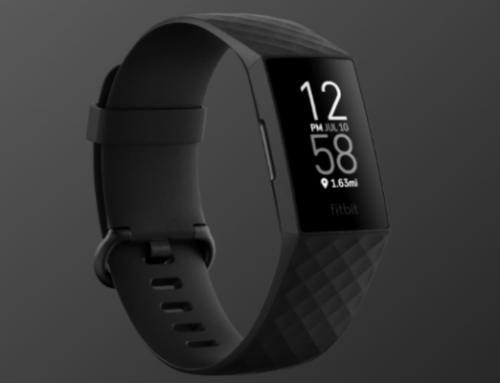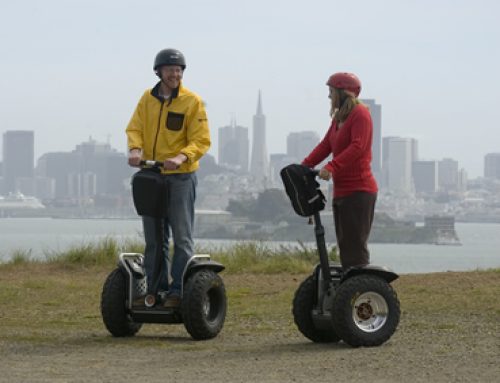“Sitting too much could kill you!” Alarming headlines this past month once again scared health conscious readers as journalists reported another new study showing a correlation between sitting time and death.
Of course, just because you work a desk job doesn’t mean you are going to keel over tomorrow if you don’t change careers to something on your feet and more physical… say, lumberjack… or postal delivery person, for example.
However, the data is real – and it’s clear: For people who continue with their desk potato ways and do not at least counterbalance it with more walking and physical activity, their risk of getting sick, weak and fat in the coming years really does go up. Fortunately, as I mentioned in part 1 and in previous articles, there are some neat little gadgets that might help motivate you to get off your butt and walk more. Today I review the Fit Bit…
What is a Fit Bit and what does it do?
The Fit Bit is basically a tricked-out pedometer. Pedometers are small, portable electronic devices that measure how many steps you take each day and display the number on the digital readout.
Why would you want to know that? Because if you sit on your butt too much (low step count), you are more likely to get fat, sick and (according to the latest research), die younger. If you are physically active (high step count), you are more likely to get leaner, healthier and live longer. A commonly recommended daily step goal which qualifies you as “not a desk potato / couch potato” is 10,000 steps per day.
While a basic pedometer does nothing but track your steps taken, the Fit Bit has been souped up with all kinds of extra fancy features: It’s even a sleep quality tracker. By attaching the device to the wristband, it monitors how many times and how long you wake up during the night (thereby telling you not only how long you’ve slept but how well you’ve slept). I haven’t used the sleep tracking function, so I can’t review that feature, but it could be valuable for some people because of how important sleep quality is for good health, peak performance and even for body composition.
Fit Bit is a small electronic device, about the size of your thumb, and you can slip it into your pocket, or clip it onto your clothes, belt or bra (the entire device is actually a clip – in fact, it kind of looks like a money clip). The size is worth mentioning. On the pro side, many people who have used larger and bulkier pedometers (or a bodybugg) said they loved the small size of the Fit Bit device. On the con side, some people express frustration in how easy it is to lose this thing, or forget it was in your pocket when you do your laundry – I’ve heard that one quite often. (Note: you can get a leash for your fit bit if you are prone to lose little things).
Does the Fit Bit work well?
Tech gadgets don’t always do what’s advertised… or they have bugs of one kind or another. How well does the Fit Bit do its job?
I’ve honestly never been a gadget guy before and I’m definitely a late adopter on everything (a good practice in the fitness world, usually). The one basic pedometer I (briefly) had some experience with before, required you to take a test walk to measure your actual strides – that’s how you calibrated it. All pedometers are accelerometers (they detect motion), but the Fit Bit is billed as a 3-D accelerometer (which, I believe, means it monitors motion in all directions). With the Fit Bit, I simply registered on the website, and by entering my personal data, including my height, into the fitbit website, I believe that is how it measures steps more accurately.
As best as I can tell (looking at the readout as I walk and or counting the steps and comparing to the numbers), the Fit Bit tracks step count perfectly – 100% accurate or near to it – at least it has for me. Of course, I did hear this from a reader on the Burn the Fat facebook page: He said his Fit Bit registered 4000 “steps” while he was mowing the lawn … on the riding lawnmower. I thought that was pretty funny.
This also made me wonder: The most steps I’ve ever taken in a day since I’ve had the Fit Bit is 52,839 (a full day hike). The Fit Bit also said 23.9 miles (entire day’s total). A friend of mine who is only a couple inches taller, said he did 37,000 steps and that was 26 miles. We were both a little puzzled by that. Maybe I have short legs or maybe it was all the climbing I was doing (short steps up and downhill? I dunno).
Speaking of hills, Fit bit is also an altimeter (it tracks elevation), and being as I am on the 6th floor, I found that stair steps are tracked perfectly too and it translates that into floors climbed for you (yes, I have in fact been taking the stairs more). On that note, Fit Bit does track steps on a stairmaster as well – the stepmill and the regular stairclimber – though I’m not certain what constitutes an “official” stairstep considering how much you can vary your stride range of motion on those machines (and you can double step or single step on stairs.
Oddly enough, the Fit Bit even ticked off a step with every revolution I pedaled on an exercise bike as well (fit bit in pants pocket), even though I was stationary. Should a pedal revolution count as a “step?” People debate about the use of a “step counter” on a bike, but if you don’t like it, just take the thing off while you’re riding. No idea how it works while riding a regular bike outdoors. Didn’t try that yet. (Post in the comments if you have any feedback on that).
The fit bit also tracks and displays calories burned, but like most calorie expenditure formulas, it’s an estimation based on your height, weight and number of steps. The calories burned readout appears to correlate very well with the same calorie calculation formulas we use in Burn the Fat, Feed the Muscle. I do however, suspect it may under estimate for athletes or bodybuilders such as myself, who carry a larger than normal amount of lean body mass. That’s not an entirely bad thing though. Considering most people over estimate their calories burned, if you err, it would be better for your weight management efforts to err on the low side.
Also, I’m not sure the FitBit calorie tracking function should be relied on to track your caloric expenditure with 100% accuracy when you do a lot of weight training. Some devices, such as the body bugg, are more than accelerometers – they can track the calorie burn of all types of exercise more directly based on galvanic skin response and body temperature (Body Bugg is strapped right onto your skin via armband). The Fit Bit doesn’t do that. If I’m deadlifting, I’m not taking any steps, but I’m surely burning a lot more calories than if I were walking. All things considered, the calorie estimation is pretty good, especially since it’s an altimeter and it can factor in the higher energy expenditure when climbing uphill. My highest day: 5875 calories burned (full afternoon of hiking up and down rolling hills).
What kind of extra goodies come with the basic pedometer (step-counting) function?
The Fit Bit display gives you the following data each day in real time: steps taken, calories burned, floors climbed, miles traveled. It also has a clock for the time of day and there is a stopwatch function that may come in handy. After you have uploaded your daily info to the site, you can view all your stats online too. Just one little complaint about the display: You can’t see it in bright sunlight.
The unit comes with a docking base that you plug into your computer via USB port. There is a wireless connection which automatically uploads your daily stats to the website when you walk within 15 feet of the docking base. Nice feature. When docked, it also charges the battery. The battery life is pretty darn good (days not hours), which is a welcome relief since I am never-endingly irritated at how short the battery life is on my cell phone and laptop.
Fit Bit also comes with free access to their website, which offers a variety of tracking, accountability and motivation tools. I don’t use the food tracking feature but that’s because I had my software engineers build our own Burn The Fat meal planning software for our Burn the Fat Inner Circle members, so now I’m totally spoiled and will never need or use another piece of nutrition tracking software but our own. However, some people may find the Fit Bit web tools a nice value -added bonus.
I have heard many times that Body Bugg users are very happy customers, but they wish they didn’t have to pay a monthly fee, while Fit Bit owners are pleased to get use of the website free if they purchase the $99 device. There is a Premium membership for Fit Bit too, but its half the price and optional (optional enough that I didn’t even try it yet).
Will using a pedometer really motivate you to get up off your butt and move more?
I’m going to talk more about the motivation and accountability provided by using devices like the Fit Bit in the next part of this article series, but some of the web features are very motivating indeed, as well as fun.
There is a social element with the message board and ability to connect with friends to share stats and set challenges. You can also see charts and graphs of your progress and even track your body weight as well. The coolest part, in my opinion, is the groups and leaderboards. If you’re competitive and you like a challenge among friends, you will love that.
With various levels of accomplishment, you are awarded badges recognizing your achievement. Every time you crack another 5000 steps, you get another badge. It’s just a little knick knack, but who doesn’t like awards? I have to mention though, that when I had my first 45,000 step day and I didn’t get a badge, I was rather perturbed. Then I cracked 50,0000. No badge again.
Being double perturbed, I emailed fit bit support and they replied and apologized that they only gave badges up to 40,000. To their credit, they replied immediately and said “we take your requests seriously and will pass this on to our engineers.” We will see what happens. I know most people rarely do 40K steps in a day, but what about runners and hikers? I do it so rarely that… well… I want my 45K and 50K badges.. dagnabit!
Well, at least I got a “helicopter” badge for hitting over 500 floors… and “skydiver” badge for hitting 1000… and 432 floors in one day – got me a shiny badge for that too.
I almost forgot. Your Fit Bit talks to you. Not verbally (its silent, doesn’t even beep), but with text messages. Imagine my surprise when I took the thing out of my pocket and set it on the table. A couple seconds later, the display readout texted, “Walk me Venuto!” “Go go go Venuto!” It got a little weird when it said, “Hug me Venuto!” “Hold me Venuto!” But I admit it, that was strangely amusing and almost motivated me to take her for a walk.
Bottom line:
The Fit Bit has it’s quirks and like any electronic device, people are bound to see technical glitches on occasion that will color their entire experience with the gadget and prompt an emotional 1 star review. Me? I rate it 5 stars and I’m a fan. I think the time was right too because I’ve spent years in the gyms lifting weights and doing cardio machines, and these days, I prefer pumping iron in the gym but going outdoors for much more of my”cardio,” getting out of town for hilly hikes whenever I can or walking The Hudson Riverfront walkway when I’m near home (best views of NYC skyline!)
Someone on a tight budget who simply wants to count steps could find a cheaper device. My training partner even informed me that some smart phones are now being equipped with pedometers and syncing up with various apps. He wondered why you would need a Fit Bit if you have a step counter on your phone. But for me the Fit Bit’s features and performance justify its $99 price, and for anyone who uses the full suite of features including the website, it is surely well worth it.
In the 3rd and final part of this series – and that’s where it will get really interesting – I’ll answer the question: is the fit bit or a pedometer effective as a motivation tool? Will it make you more aware of your couch potato/ desk potato ways and more accountable to walking more? Will it help you lose weight and keep it off? Would it even help a guy like me – a bodybuilder – who is already motivated and training plenty in the gym?
I’ll also show you the results of some of my many “NEAT” experiments and tell you what the Fit Bit has to do with crack addicts. Read part 3 to find out:
PART 3: My NEAT Step Experiment: Move a Little, Lose A Lot
– Train hard and expect success,
Tom Venuto
PS. Disclosure: I like the fitbit so much, I’m now an affiliate of the company. So if you click through my links, I make a commission on the purchase (“It’ll buy me a protein shakes”). Please note however, that my views and ANY of my product recommendations are only my opinion, so while I’d like to think you’ll trust my recommendations, always do your own due diligence before buying anything on the Internet.
PPS. For some fascinating additional information on N.E.A.T. (non exercise activity thermogenesis) and the importance of high activity levels and step counts (including the reason why the Amish can eat pie, gravy and lots of carbs and still stay thin), be sure to check out The Body Fat Solution (Avery/Penguin Books, NYC), chapter 7 in particular. The book got the thumbs up from Oprah Magazine and the Wall Street Journal (book review) and is in print in kindle, paperback, hardcopy and audio editions:
The Body Fat Solution By Tom Venuto (trade paperback)
The Body Fat Solution By Tom Venuto (hardcover)
The Body Fat Solution by Tom Venuto (kindle)






Excellent review. I’m really interested in the Nike Fuel band, which is similar, but works with a points system and various measurements like heart rate I believe (not just accelerometer). Do you think Fuel is worth it? Or will you cover that in your next article? Thanks again, Tom. Keep it up!
Hi Michel. Thanks for your comments. I’ve never used the Nike Fuel band and haven’t even researched it yet. however… for my dear blog readers… and the sake of science :-) – I could put it on my list of things to do. Far more people have wanted me to do a bodybugg review, so that will probably be next experiment. FYI: I have friends in the endurance / running / triathalon world who are Nike Fuel band fans and have given it thumbs up.
Let me know if you need a Bodymedia (same as the bodybugg). I would be happy to work out a trade with you. Let me know if you are interested. Have you heard much about the mybasis.com watch? Thanks for all of the information and motivation.
Thank you,
Barry
I’ve had the Fitbit for a couple of years now and LOVE it! It’s definitely the best $99 I’ve ever spent. The only time I take it off is when I’m in the shower. Otherwise, I have it on. It keeps me accountable, and I love having everything in one place.
I’ve had my FitBit for a couple months now, and I love it!! Great for keeping me accountable and keeping an eye on my caloric expenditure. I use the sleep function, now mainly out of habit, and the only thing I’ve noticed is when you use the stopwatch function (which you do to track sleep), it records the calories “burned” (I have it synched to MyFitnessPal to monitor my cardio), so I have to remember to not really “count” those burned calories. Minor technicality. Overall, I love it, and have you noticed how it “gets used to” your activity, therefore making it harder to get the full grown flower?? Definitely keeps me pushing myself! Great review, as always, Tom!
I used a FitBit for about a year until, sadly, I did lose it one day. I found it to be a great motivator, especially when I saw I had a day that my steps fell below my norm. That would definitely get me to not bypass the gym after work. I like the sleep function, too. I cycle outside, and I never could quite figure out what the device counted as a step while riding, but I kept it on anyway. Have thought about buying another one for awhile. The $100 price tag is not bad until you have to buy a second one.
“hold me venuto” reminds me of the South Park episode with the Shake Weight.
HA!… Believe me, fit bit is much more G-rated than that (very funny) south park episode. Cheers, T.
I bought a fit bit a couple of years ago. I burned mine in the dryer. Your review makes me want to get another. And btw, I really liked e sleep monitor function.
I have had a Fitbit for a little over 2 years and I am closing in on 5,000 miles and 5,000 floors. You can adjust the stride length of your steps on the Fitbit website. I have found it a useful tool as it tracks about as best as ay simple device can over all activity. I know take the stairs to my office and the stairs to the office and most meetings. On days I don’t run or do other exercise, I check my Fitbit when I walk the dogs and do a couple more blocks to get in my 10,000 minimum, same with stairs leaving the office. It does a decent job of projecting you calorie burn for the day too if you are not weight lifting. Over all for $99 it has been one of the best gadgets I have ever bought (No. 1 is the heart rate monitor)–it is a real motivational tool because it keeps me honest on my activity levels and I never did steps before and walking the dogs was just a chore instead it has became part of my fitness routine.
This is so funny because I am now two weeks in with the FitBit and I am in love with it. I am strangely competitive and having such easy stats just drives that for me. I didn’t know about the BFFM Planner, I’ll check it out.
I enjoyed your review of the FitBit. I bought one several months ago, and I love it. I still have a BodyBugg, but I quit wearing it. While it is a good device, I feel that the FitBit has so much more to offer. It is more comfortable to wear, and has other features such as the sleep monitoring piece that I have found interesting. I don’t use the food diary but I use myfitnesspal which is linked to my FitBit account. I use pretty much every other feature including the premium account which is inexpensive and provides very good reports which can be exported. I am a Geek by nature and trade, and I find this little gadget absolutely fascinating to play with and use.
Hi Tom, thanks for the through write up of the Fit Bit. It does sound like a nifty tool; takes much of the guesswork out of how active we really are. I am a BodyBugg user and have been so for a number of years. I love it! I know how many calories I burn whether it be a cardio or weight lifting workout, how many steps I take each day, etc. It helps me keep track of my caloric intake as well (you just log what you eat on the website); and helps me to better be able to follow all of the guidelines you outline your burn the Fat, Feed the Muscle book. Thanks again for doing all you can to help us achieve our goals!
I’ve been using the fitbit for about a year and a half. I also use the fitbit website because I like my own old-fashioned recipes that I have re-jiggered to be healthier but still very much to my taste. I can figure the nutrition levels on those and input the data and it stays, so I can treat it as a standard food item. I can also make up my own favorite meal combinations that I use regularly so I don’t have to enter every item every time.
Yes, I am a cyclist, and although fitbit has a special device for cyclists, I find the regular fitbit very adequate at calculating the cycle work as steps, and even counts it as stairs if you are doing some hill-climbing.
It has also encouraged me to move around the house more as I go about my day to increase my NEAT calorie burn. I live in an old-fashioned rowhouse, and am amazed at how many stairs I climb on an average day. Rarely fewer than 10 flights.
I love this device. Can’t wear that wrist thingy because I have very sensitive wrists, but it works very well clipped to my nightgown. Just make sure you don’t try to clip it to anything too bulky, because it will split as the device gets older.
From me it gets 5 stars.
Hi Lee! Thanks for the info / feedback!
Oh, and if you are using a regular bicycle and not a stationary one, you are using your whole body for balance. I have used the fitbit on both and it actually does (don’t ask me how) calculate a considerably higher burn number if you are riding a regular bicycle.
Hi Tom
I am a gadget junky (love gadgets) I have tried Fitbit, Body bug , and heart rate monitors , and regular pedometers ,
But I have found a new love !!!!! And it has gotten me to move sooooooo much more ! Striiv , this is a pedometer (counts steps ) also stairs /&elevation running steps ,time active ,miles calorie burn ,but it is so so so much more it randomly challenges you through out the day you get trophies charts daily averages ,personal bests , all time totals ,.But one of its best well it has so many other fabulous features .you earn energy points witch add up to donations ,to fight polio,save the rain forest ,and donate water to children in south America who have no clean water , PLUS you get an island that you build with energy points trade for money’s to buy plants and buildings , and it is all right there in your hand no computer needed to see everything that is going on ! You do plug in once a day to send in your donations ,but you get extra prizes when you do .and you get cute little animals to live on your island .
I used it mountain bike riding although I don’t think it got all of my peddling it did get my elevation in stairs ,I think it is better than all the others and I have had them all ! Thanks for listening you friend gadget junky
@Michel- Ive had great success with the Nike Fuel band and highly recommend it as a quality product. The points system and the various HR measurements you speak of truly set it apart. Overall a quality product.
I’ve used my FitBit for a couple of years and love it. It really does motivate me to move more.
I’m a cyclist, and I’ve found that when I wear it on the front of my bra and I’m not using my upper body much with my riding, there isn’t much of a step count. So my total calorie burn for my bike ride is very low. If I wear it on the lower edge of my bike shorts, it will count the revolutions of my legs as steps. But, this doesn’t always calculate my calorie burn adequately either. I usually end up using my Garmin bike computer/GPS/HRM on my bike rides and input that data into FitBit to help calculate my calorie burn for the day. It’s only an estimate, but it has been close enough to help me reach my fitness goals.
(: WELL I MAY NOT HAVE HAD THE LUXURY OF HOLDING *FIT* BUT THAT’S ONLY BECAUSE I WAS AFRAID OF GETTING *BIT*!!! (: SINCE THEY DID NOT HAVE IT ON A LEASH (: EITHER WHEY (: THIS POSTUM WAS REALLY FUNNY (: CAN YOU IMAGINE THE LOOK ON THE GUYS FACE WHEN THAT GADGET STARTED TRYING TO GET *FRESH* (:! OOPS I HAVE TO GO NOW (:GOODBYE (;
I use a Bodybugg. This sounds like a great tool as well. I wish I had read this review before upping my subscription for the Bugg. I am reminded that these are just tools however, and doing the mental work that Tom advocates can not be done by any device no matter how good it is. I do like the feedback that technology gives me. It is amazing how making some small changes will increase NEAT.
Les
I’ve had the fitbit for about 3 weeks, and absolutely LOVE it! it definately keeps me motivated and i find i ramp up my ‘goals’ on the website every week.
I wear my HRM when i do cardio and then log that on the website as an activity. Fitbit recommends you do this for truer cals burned tracking.
i have a desk job and the little graphs have motivated me to get up and walk or do some stairs hourly and go outside for a walk around the block.
Enjoyed your review and glad you are sold on it, sof of the women in my office have gotten one also and we compare and goad each other on!
My Fitbit One does not track on the stairclimber :(, but even when the battery is dead it will still track, you just can’t read the display until you charge it, but everything was there on the fitbit site!
Fitbit gadgets are indeed creative. However, they can’t keep up with stock.
I’ve been trying to get a flex wristband which apparently is a better motion tracker, but after the release on May, it is impossible to find. Their backorder status is for nearly 2 months. You should give the Jawbone’s Up a try ;-)
Yep, a bunch of people griping about the flex wristbands being REALLY back ordered. For me, its not my style (wristband) so the one is good for me – its working exactly like my old ULTRA except you do have to take off the rubber clip to charge – only slight inconvenience. There are people in our 1 million step challenge using Jawbone up, nike fuel band, striiv, I even heard the new version of the ipod nano has a fitness tab with a pedometer and some smart phones also have apps that are pedometers – at least thats what Ive been told. If any of those companies nike, jawbone, ever happen to read this and want to send me a free sample, I would put it to the test and write a review, plus I’d be able to compare between brands. Thanks!
Have not used a fit bit before, but this review might of just push me to get one. Great write up. Thanks
Great Review on the Fit Bit Pedometer! Now i am interested in buying. Thanks for sharing!
Great review of the Fitbit. I started off with the Ultra about a year and a half ago, and since have upgraded to the One. I now have over 4.5 million steps, traveling over 2200 miles. My best days for both steps and climbing were when I went on day hikes up here in Maine. I surpassed 200 flights of stairs and hit the 30K step mark that day. I think they’re very motivational, especially with the office job I have.
[…] Fit Bit Pedometer Review (My NEAT Step Experiment Pt 2 …> August 3rd, 2012 . fit bit pedometer review (my neat step experiment pt 2) update june 2013 . by tom venuto posted in cardio training, product reviews. Source : Fit bit pedometer review (my neat step experiment pt 2 […]
Good information was shared, thanks for this.
glad it was helpful. Thanks for posting